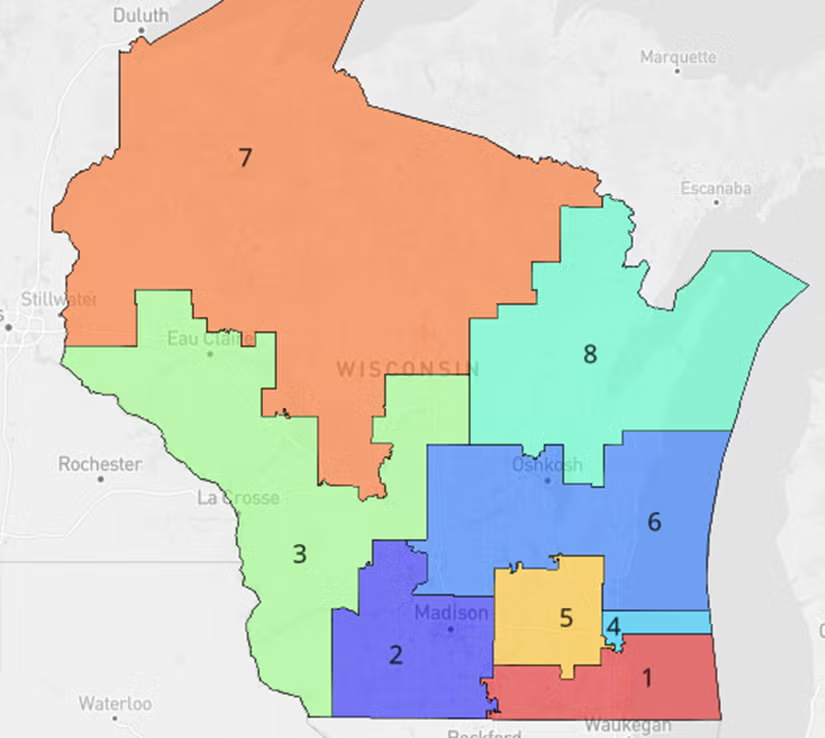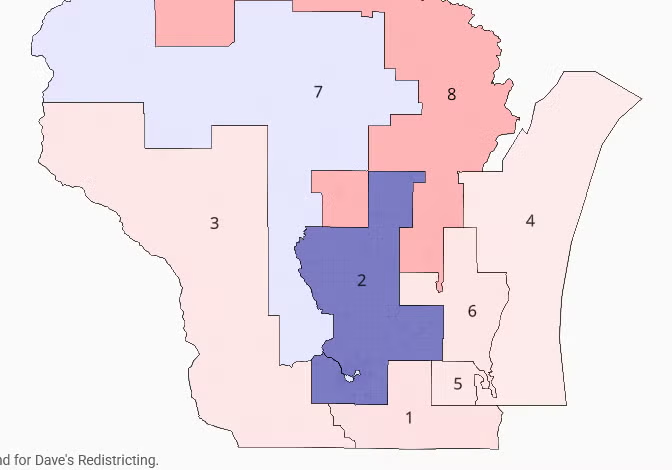This piece in Urban Milwaukee discusses the anti-competitive gerrymandering claim that has been filed against Wisconsin’s congressional districts (by a team of lawyers of whom some are at HLS’s Election Law Clinic). The piece nicely illustrates how much more competitive Wisconsin’s districts could be under a different district map.
[The plaintiffs] argue that anti‐competitive gerrymandering is distinct from partisan gerrymandering, which draws district lines to pack members of the disfavored party into a small number of districts, thus unfairly boosting the number of seats won by the favored party. Anti‐competitive gerrymandering is also distinct from racial gerrymandering. . . .
The next graph, drawn using DRA, maps today’s Congressional districts. Districts 2 and 4 are heavily Democratic, based as they are on the state’s two largest cities, Madison and Milwaukee. Districts five to eight are overwhelmingly Republican. Of the eight districts, only district one and three can be considered competitive, although both are currently Republican. . . .

If the Wisconsin Business Leaders are successful in their challenge, what might the replacement look like? According to DRA’s analysis, the most competitive map of those submitted for Wisconsin’s congressional districts is called “muffintime’s Competitive Wisconsin.”
The next graph shows the competitiveness of each of the eight districts generated by the muffintime map. Six of the eight districts are almost perfectly competitive. In fact, none of the winners in those six districts won the majority of the votes, only a plurality when write-in votes are included.
Even in the two districts that favored one party over the other— Democrats in District 2 and Republicans in District 8—are more competitive than the six uncompetitive districts in the current map. . . .

No attempt is made here to show that the muffintime’s map was the best of all possible maps for Wisconsin’s congressional delegation. However, its obvious superiority to the current long-time map should be a sign that better and more democratic maps are possible. Competition is good for democracy.